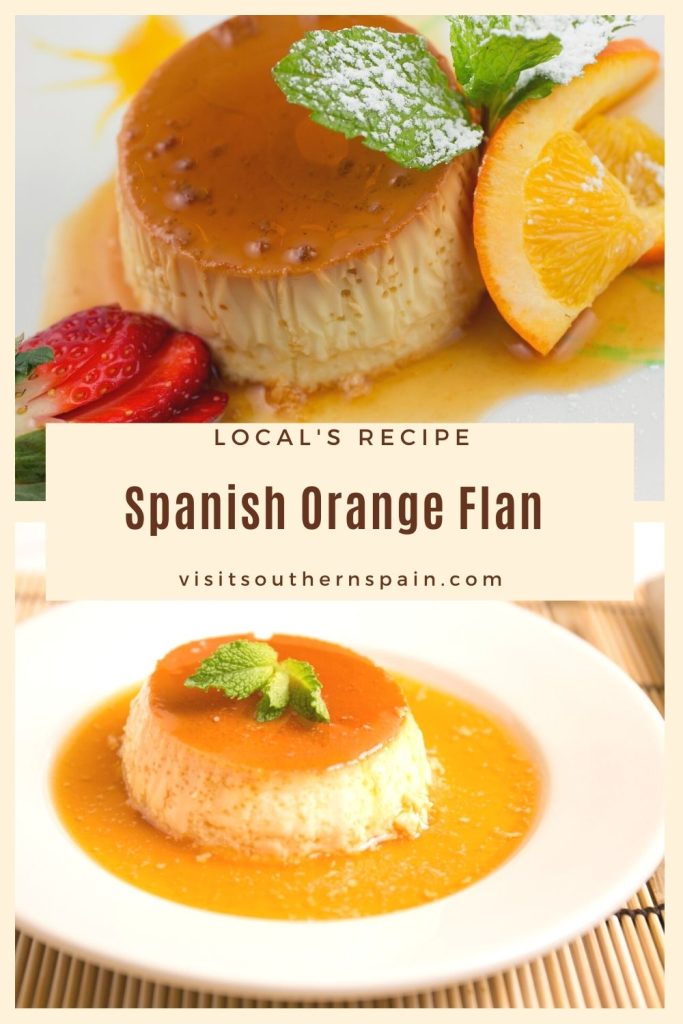If you are looking for the best Spanish dessert to serve at parties, special events or to eat yourself, then you are in the right place.
Here, you will learn everything you need to know about the orange flan: a new take on the classic Spanish flan recipe.
Not only will you get to know how to make it, but you will also get a deeper insight into the flan history, and some extra tips for storing and serving.
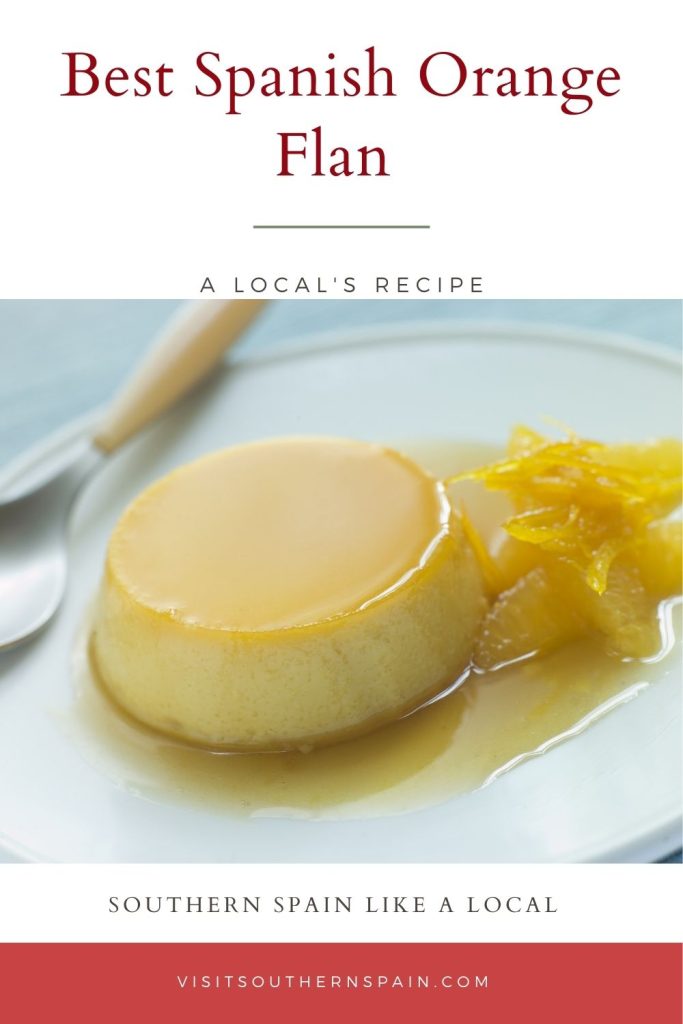
You, dear reader, support this blog. If you purchase through a link, we earn a small commission. As an Amazon Affiliate, we earn from qualifying purchases.
Background of the Dish
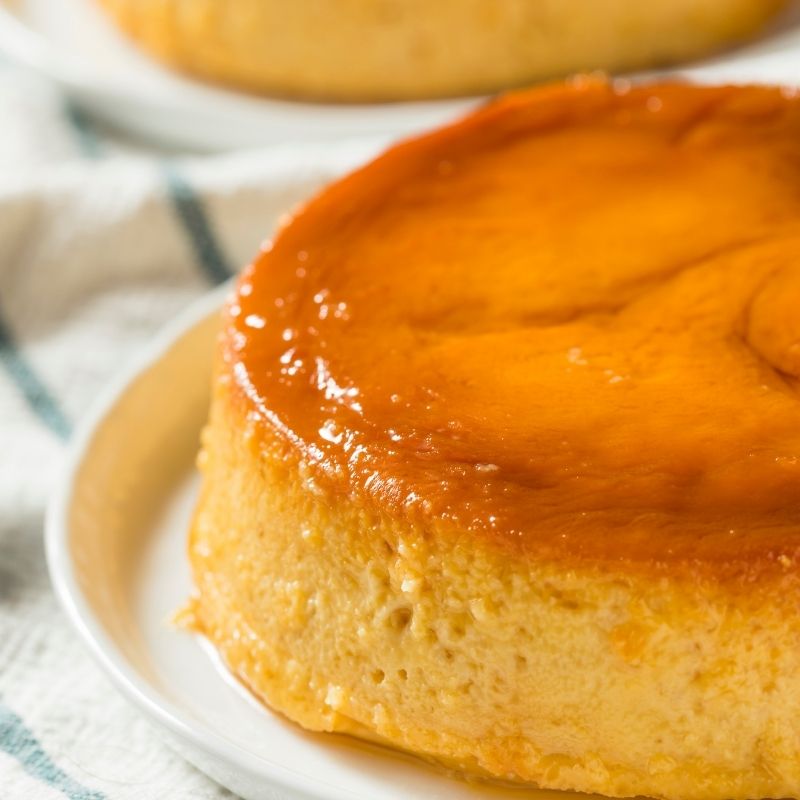
Flan is one of the oldest desserts in human history, dating all the way back to ancient Greece.
From the seventh century, it spread to different countries, and each region came up with its version of the flan dessert.
The orange flan is a recent alternative to the Spanish classic recipe and became popular only after 1960.
Pin for later!
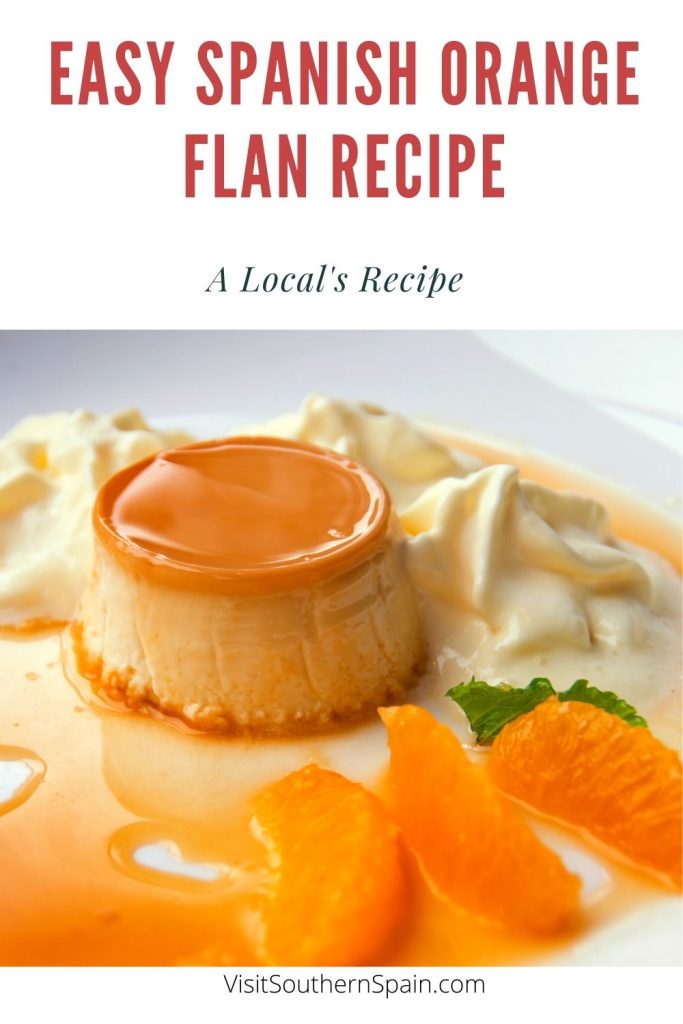
Things You’ll Need for Orange Flan
The main ingredients to make flan are eggs, milk, sugar, and in this case orange juice.
You will have to cook this orange flan in the oven by following the bain-marie method but we promise that it is very simple.
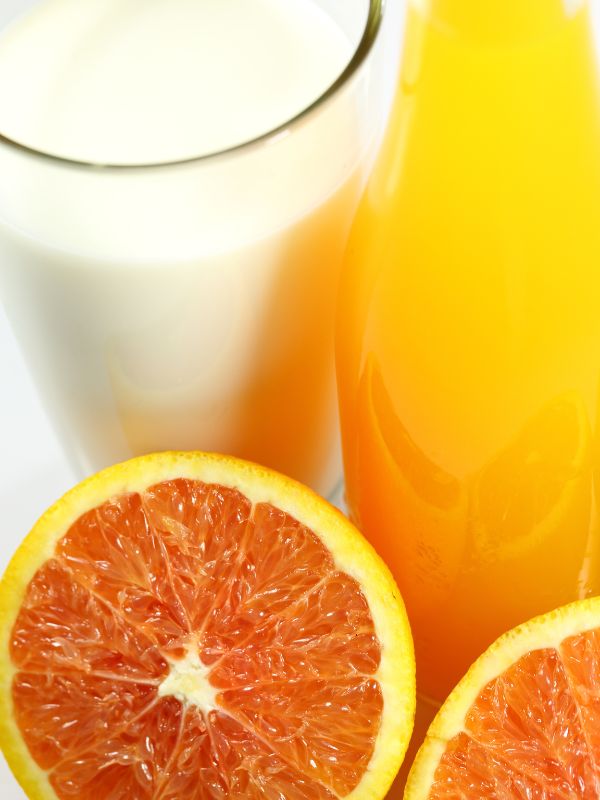
Ingredients
- 1 cup (200ml) Orange juice
- 4 eggs
- 1 2/3 cups (400ml) Milk
- 1 cup (200gr) of Sugar
- 3/4 cup (150 gr) sugar (for the caramel)
How to Make Orange Flan – Step by Step Guide
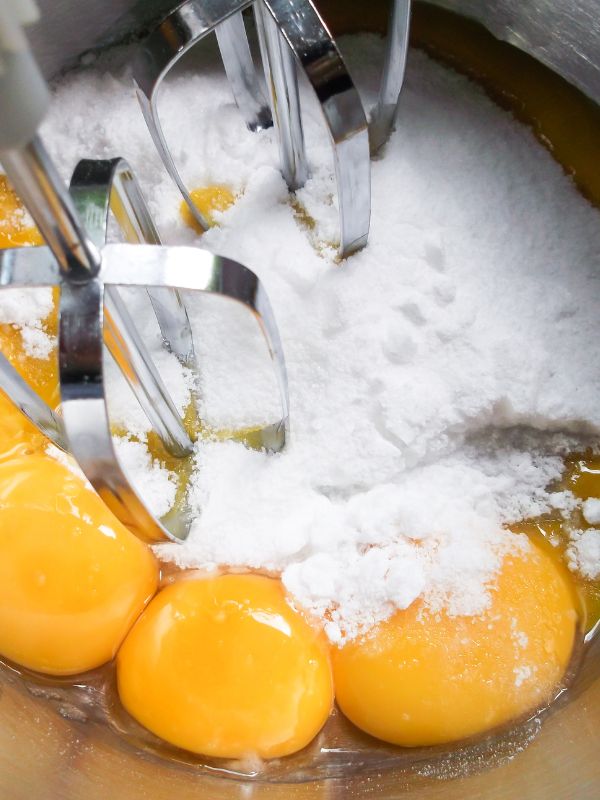
- To start making this Spanish flan recipe grab a large bowl and beat the eggs with the sugar until you get a homogeneous mixture and no sugar grains are felt.
- Then add the milk and orange juice, and continue mixing with a whisk until you have small bubbles on top. Set aside.
- Now in a pan, add the sugar for the caramel and prepare it over medium heat. Do it until it has a golden color (it will cook more with the rest of the flan and it will reach the right color there).
- After that, heat a large pot with water and introduce a flan mold. Inside the mold, add the caramel creating a layer at the bottom.
- Then add the flan mixture over the caramel and place in a bain-marie with the oven at 160º for 120 minutes or check with a knife (it has to come out clean). Cover the top of the mold with aluminum foil to prevent the flan from browning too much.
- When it’s ready let it cool down a bit so that when the Spanish flan sets completely you can remove it from the mold. Take it out of the mold before it cools completely so that the caramel in the pot does not solidify, and can remain as a sauce for the flan.
- Then, store it in the fridge and serve the orange flan whenever you want.
Substitution of Ingredients
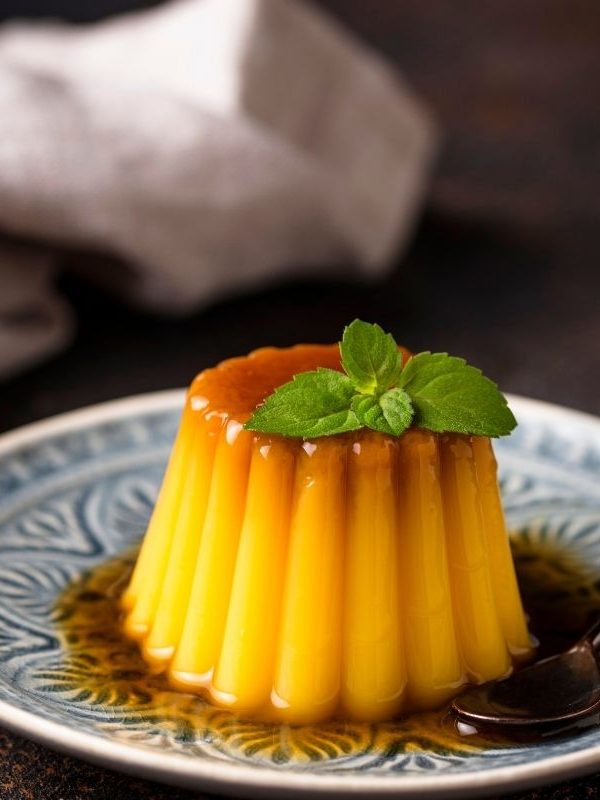
The recipe for orange flan only calls for a few ingredients, so we don’t recommend making a lot of changes, but there are a few that you can make.
This is an easy flan recipe with milk, but you could make it without it by using double the amount of orange juice and an extra 1/4 cup sugar (the texture won’t be as creamy).
You can also make this orange flan with brown granulated sugar instead of the white one, but it will be more bitter.
The orange juice is the star of this flan recipe so make sure it is a great quality one (either homemade or storebought).
This is the best flan recipe, but you could try other ones with different flavorings if you don’t like the orange.
For example, you could make the classic Spanish Flan recipe, the Spanish pumpkin flan cake, or the tocino de cielo.
Tips on Serving Orange Flan
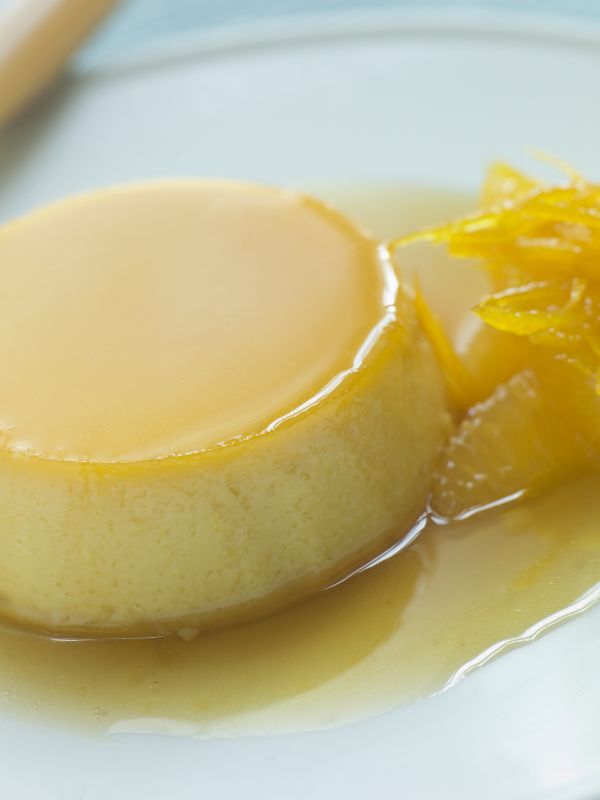
To serve the flan Spanish dessert just cut it into small triangles (like cake slices), put them on a plate, and pour some of the caramel on top.
If you want to give another texture to the orange flan, you can crush some Spanish sugar cookies and sprinkle the chunks on top.
Try the Spanish orange cake, a delicious and easy-to-make cake with a refreshing and citrusy flavor you won’t be able to refuse.
Other Hispanic desserts that are easier to serve are the Crema Catalana and the Spanish custard dessert because you already cook them in small ramekins so you can serve them without cutting.
How to Store Orange Flan
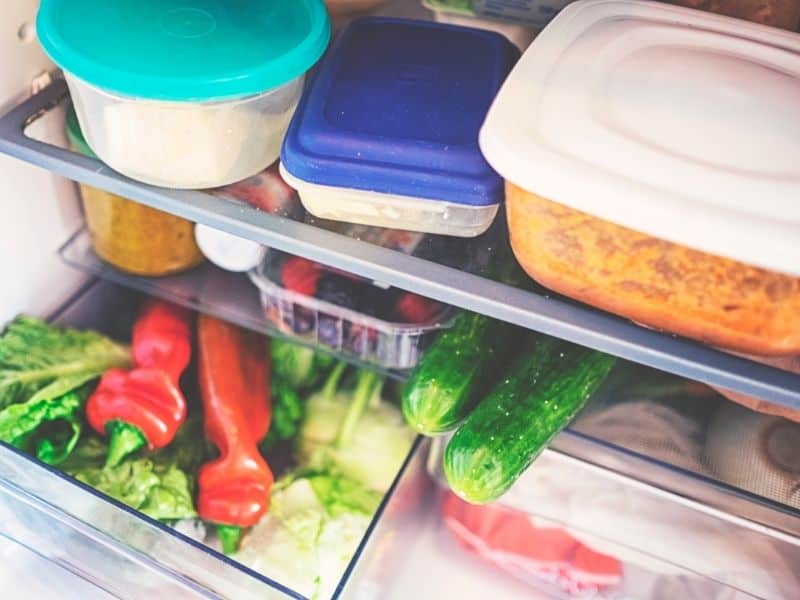
As well as other Spanish desserts, flan can be stored just in the fridge.
The orange flan can last there up to 7 days, but you should store it in a tupper or a covered container.
You can’t freeze the orange flan because it would get a weird texture, and some liquid crystals would form making it unpleasant to eat.
Recipe Card: Orange Flan
Spanish Orange Flan Recipe
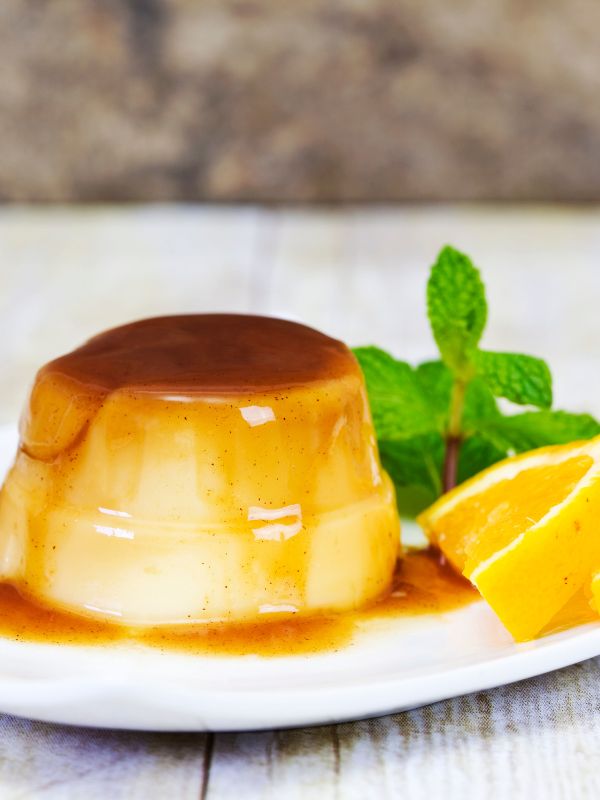
If you are looking for the best dessert to serve at parties, special events, or to eat by yourself, then you are in the right place.
Here, you will learn everything you need to know about the orange flan: a new take on the classic Spanish flan recipe.
Not only will you get to know how to make it, but you will also get a deeper insight into the flan history, and some extra tips for storing and serving.
Ingredients
- 1 cup (200ml) Orange juice
- 4 eggs
- 1 2/3 cups (400ml) Milk
- 1 cup (200gr) of Sugar
- 3/4 cup (150 gr) sugar (for the caramel)
Instructions
- To start making this Spanish flan recipe grab a large bowl and beat the eggs with the sugar until you get a homogeneous mixture and no sugar grains are felt.
- Then add the milk and orange juice, and continue mixing with a whisk until you have small bubbles on top. Set aside.
- Now in a pan, add the sugar for the caramel and prepare it over medium heat. Do it until it has a golden color (it will cook more with the rest of the flan and it will reach the right color there).
- After that, heat a large pot with water and introduce a flan mold. Inside the mold, add the caramel creating a layer at the bottom.
- Then add the flan mixture over the caramel and place in a bain-marie with the oven at 160º for 120 minutes or check with a knife (it has to come out clean) Cover the top of the mold with aluminum foil to prevent the flan from browning too much.
- When it's ready let it cool down a bit so that when the Spanish flan sets completely you can remove it from the mold. Take it out of the mold before it cools completely so that the caramel in the pot does not solidify, and can remain as a sauce for the flan.
- Then, store it in the fridge and serve the orange flan whenever you want.
Notes
The bain-marie cooking method is key for nailing this easy flan recipe, so you have to follow it or you will end up with a thick crusted flan (and unevenly cooked).
When it comes to making flan, it is key to beat the eggs properly, this way you won't end up with random egg white or yolk chunks in the middle of your flan.
Nutrition Information
Yield
8Serving Size
1Amount Per Serving Calories 235Total Fat 3.3gSaturated Fat 1.3gCholesterol 86mgSodium 55mgCarbohydrates 49.6gFiber 0.1gSugar 48.8gProtein 4.7g

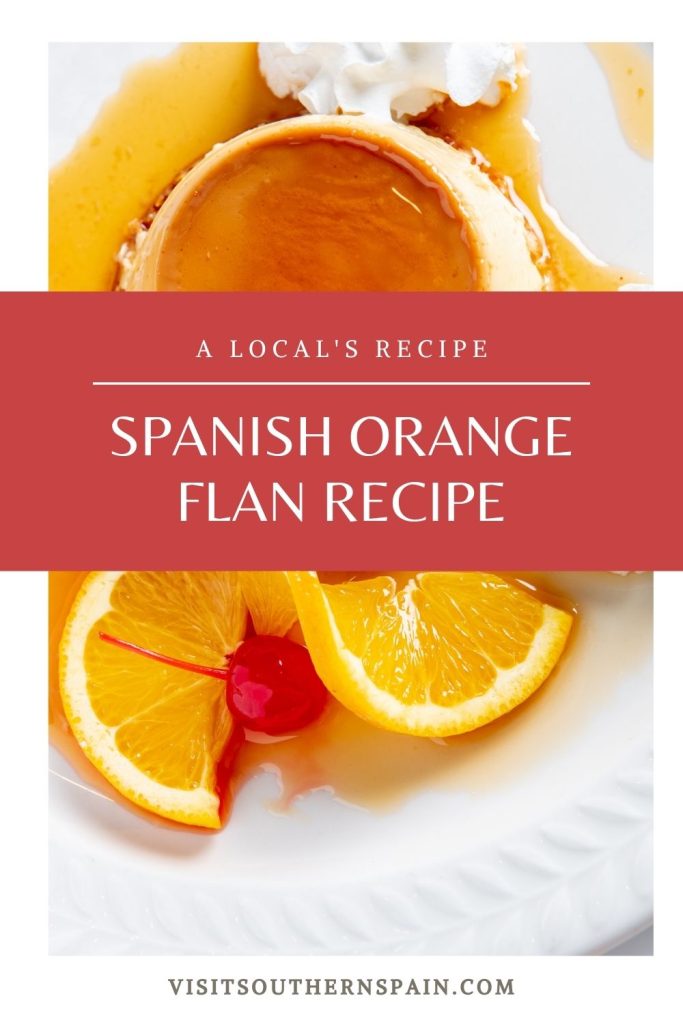
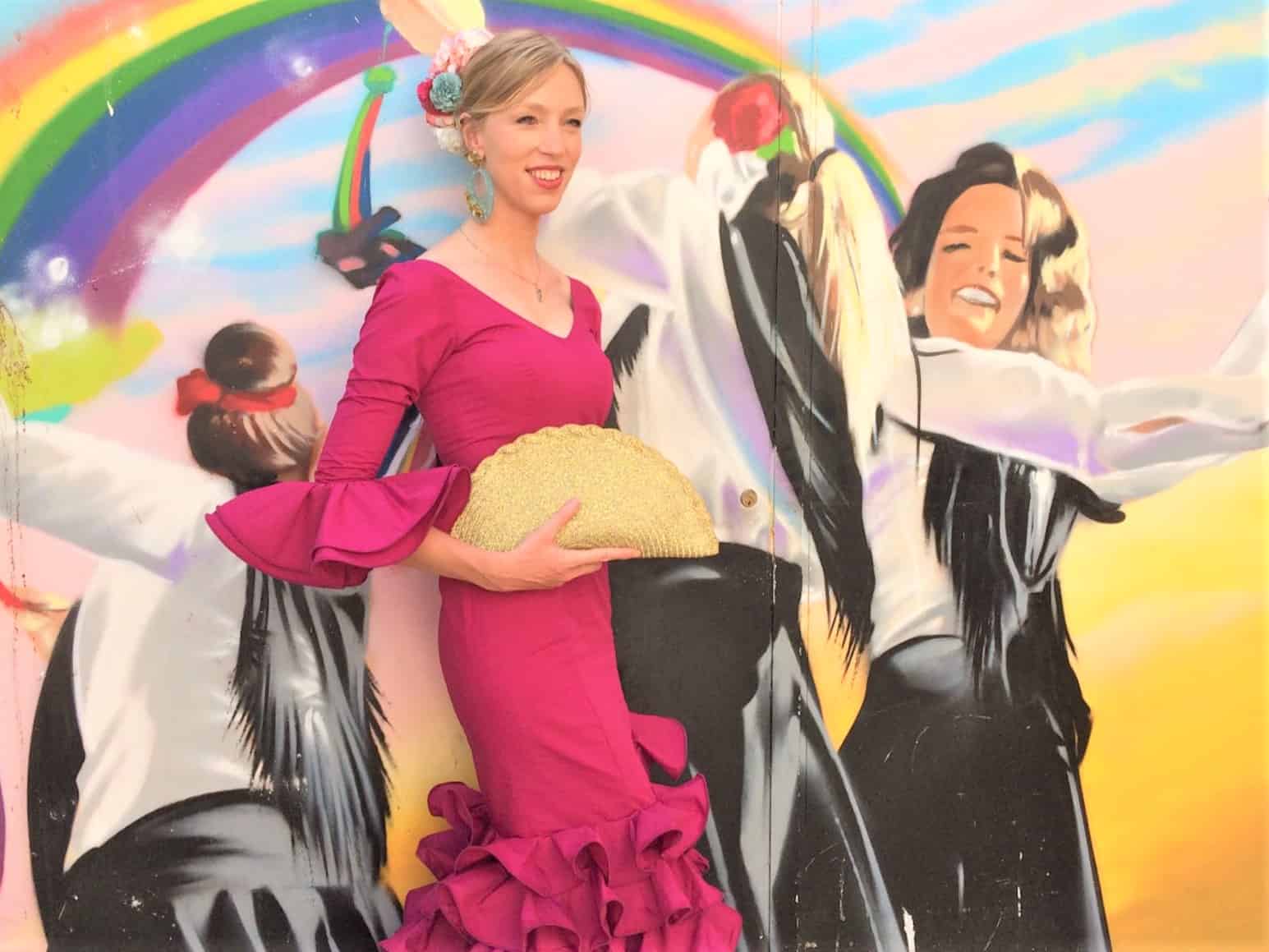
Hola, I’m Paulina! Together with my team, we are passionate about Southern Spain. Here we share all you need to know for great times in Southern Spain with the best places to visit, stay and, of course, the best food to eat.
Let’s dive in and explore Southern Spain’s outdoors, food and culture con pasión!

